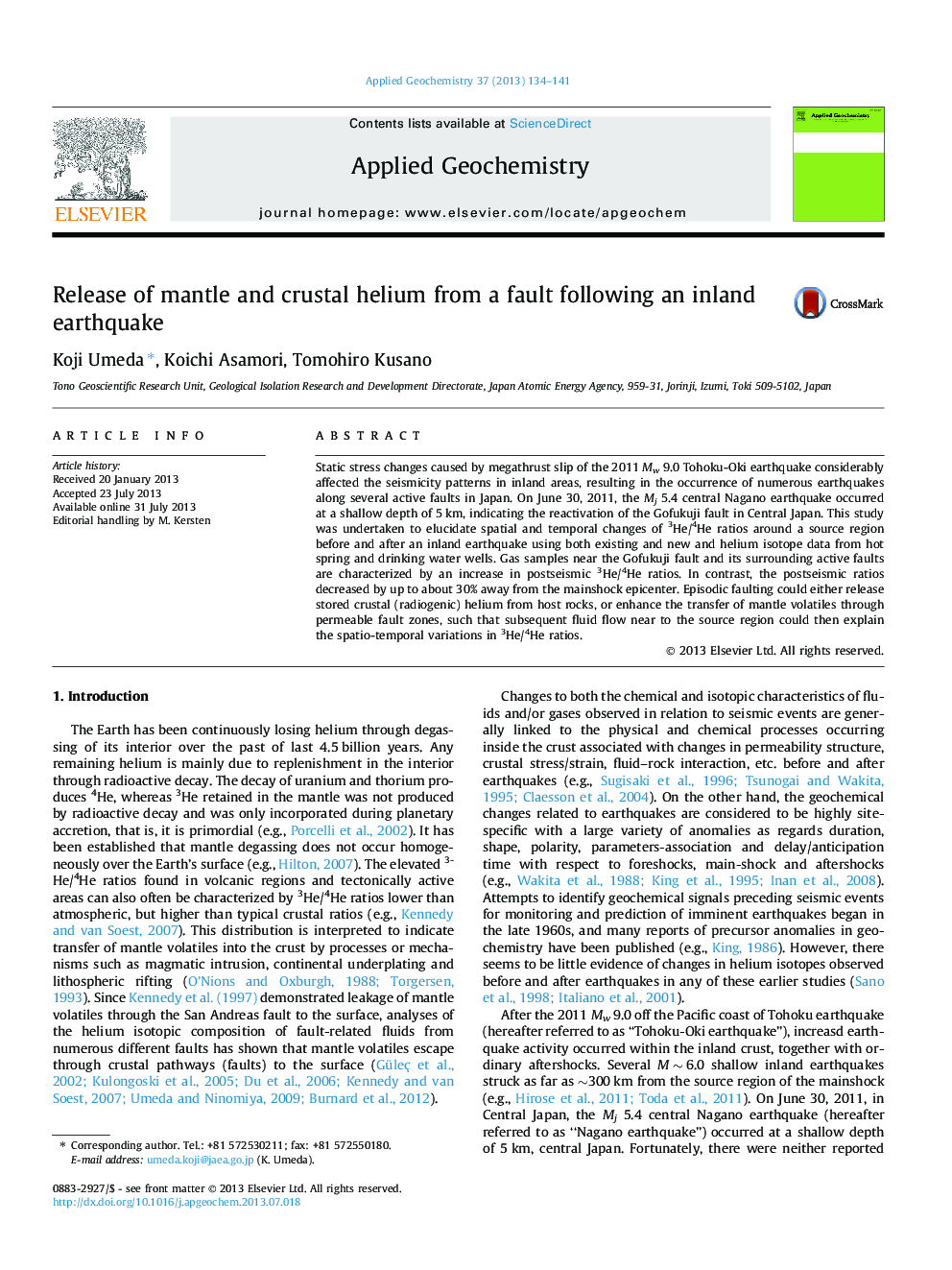| Article ID | Journal | Published Year | Pages | File Type |
|---|---|---|---|---|
| 6335302 | Applied Geochemistry | 2013 | 8 Pages |
Abstract
Static stress changes caused by megathrust slip of the 2011 Mw 9.0 Tohoku-Oki earthquake considerably affected the seismicity patterns in inland areas, resulting in the occurrence of numerous earthquakes along several active faults in Japan. On June 30, 2011, the Mj 5.4 central Nagano earthquake occurred at a shallow depth of 5Â km, indicating the reactivation of the Gofukuji fault in Central Japan. This study was undertaken to elucidate spatial and temporal changes of 3He/4He ratios around a source region before and after an inland earthquake using both existing and new and helium isotope data from hot spring and drinking water wells. Gas samples near the Gofukuji fault and its surrounding active faults are characterized by an increase in postseismic 3He/4He ratios. In contrast, the postseismic ratios decreased by up to about 30% away from the mainshock epicenter. Episodic faulting could either release stored crustal (radiogenic) helium from host rocks, or enhance the transfer of mantle volatiles through permeable fault zones, such that subsequent fluid flow near to the source region could then explain the spatio-temporal variations in 3He/4He ratios.
Related Topics
Physical Sciences and Engineering
Earth and Planetary Sciences
Geochemistry and Petrology
Authors
Koji Umeda, Koichi Asamori, Tomohiro Kusano,
